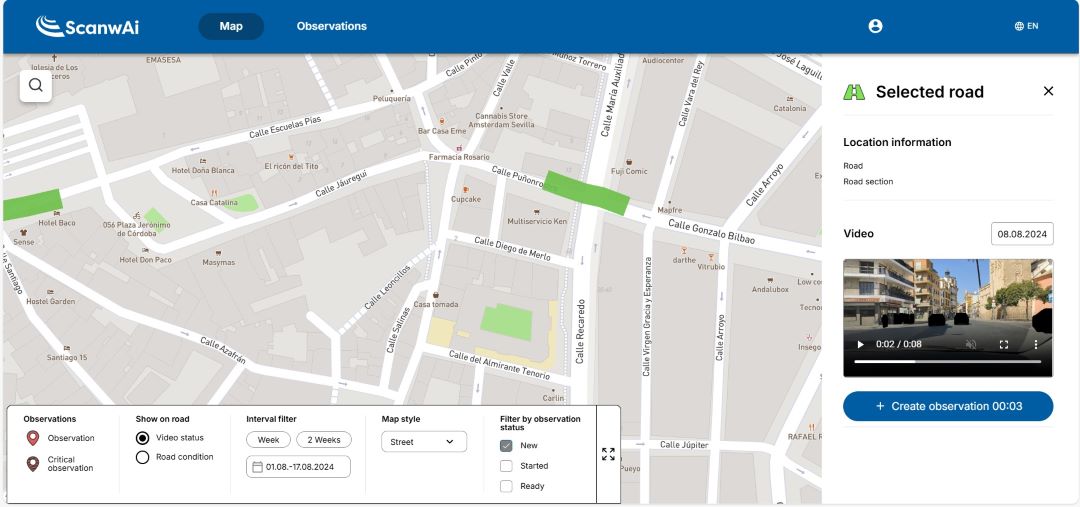Save Time and Money, cuts CO2 –Use AI Power to Validate Your Quality in Roadworks
Our cutting-edge Road Monitoring System offers four key functionalities designed to revolutionize infrastructure management:

- Producing an Image with Location Information : Our system captures high-resolution images and automatically tags them with precise GPS coordinates. This feature ensures accurate location tracking and easy identification of road conditions.
- Automated Detection of Road Surface Damage: Utilizing advanced AI and machine learning algorithms, our system can detect various types of road surface damage, including longitudinal cracks, transverse cracks, alligator cracks, and potholes. This automated detection allows for timely maintenance and reduces the risk of accidents.
- AI Proven Road Quality: Our solution offers neutral, independent survey and video data embedded with timestamps and GPS coordinates, proving the quality and reliability of roadworks and road conditions by ensuring precise and verifiable documentation of road conditions.
- Automatic Infrabalance: Our system includes an automatic infrabalance feature that continuously monitors and adjusts the balance of infrastructure elements including inventory of traffic signs. This ensures optimal performance and longevity of road surfaces, reducing maintenance costs and improving safety.
Target Groups: Governmental body responsible for infrastructure maintenance, Cities and Infra Maintenance Companies
Value Created: We maximize road safety, efficiency and sustainability
Cost Savings and Early Maintenance: AI analytics optimizes maintenance schedules, detect issues early and prioritize repairs, reducing maintenance and repair costs. Save even 40% in your infra maintenance costs compared to traditional work methods.
Extended Infrastructure Lifespan: Proactively identifying and addressing road defects, reducing costly reconstruction projects, extending road life by 50 to 100%.
Improved Safety and Risk Mitigation: Fewer accidents, less vehicle damage, lower insurance costs.
Enhanced Sustainability: Optimized material use, reduced energy use, less congestion, reduced CO2 emissions.
Juha Rytkönen, CEO ScanwAi
info@scanwai.com
ScanwAi Info
ScanwAi was founded in 2023 in Tampere, Finland. Inspired by the declining condition of roads, a group of experts in road infrastructure, technology development and company growth founded ScanwAi to create safer, sustainable road infrastructure.
ScanwAi is the first infrastructure solution that uses advanced AI technology to efficiently scan surfaces, accurately identify structural issues and intelligently schedule proactive maintenance.
ScanwAi launched its next generation AI road scanning system in 2024.
ScanwAi customer references includes Finnish Government (Finnish Transport Infrastructure Agency), Cities and Private Contractors.
ScanwAi has been selected to join Urban Tech Helsinki, a premier deep-tech incubator programme in Finland, managed by e.g. Aalto University, one of the country’s leading technology universities.
